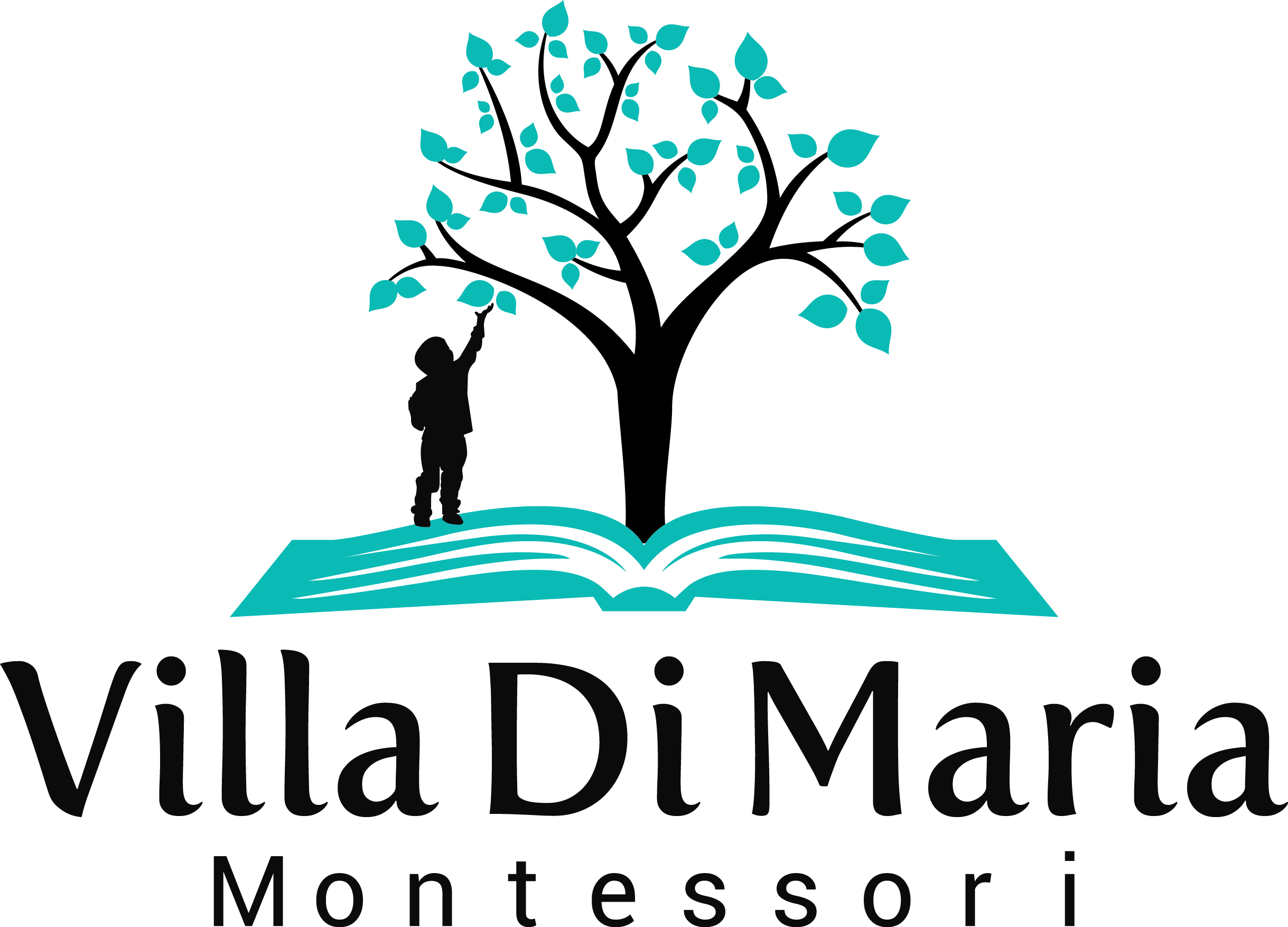Primary
PRIMARY CURRICULUM
There are several different, yet integrated, areas of learning in a Montessori classroom: practical life skills, sensorial development, language, mathematics, science, and cultural studies (geography, art, music). In addition to the available materials in each area, children also take time out during the day to sing songs, read a story, or enjoy nature. Children have both individual and group lessons in each area. Throughout the day, children are free to work with the activities. Emphasis is placed on helping children choose pursuits that are of interest to them, thus supporting the child’s natural curiosity and desire to learn. What you won’t see in a genuine Montessori program are systems of rewards and punishments to promote work or control behavior. In a Montessori class, children are engaged, active, and respectful because they are internally motivated, spending their time in an environment that consistently supports development of their will — that is, positive willpower and self-control.
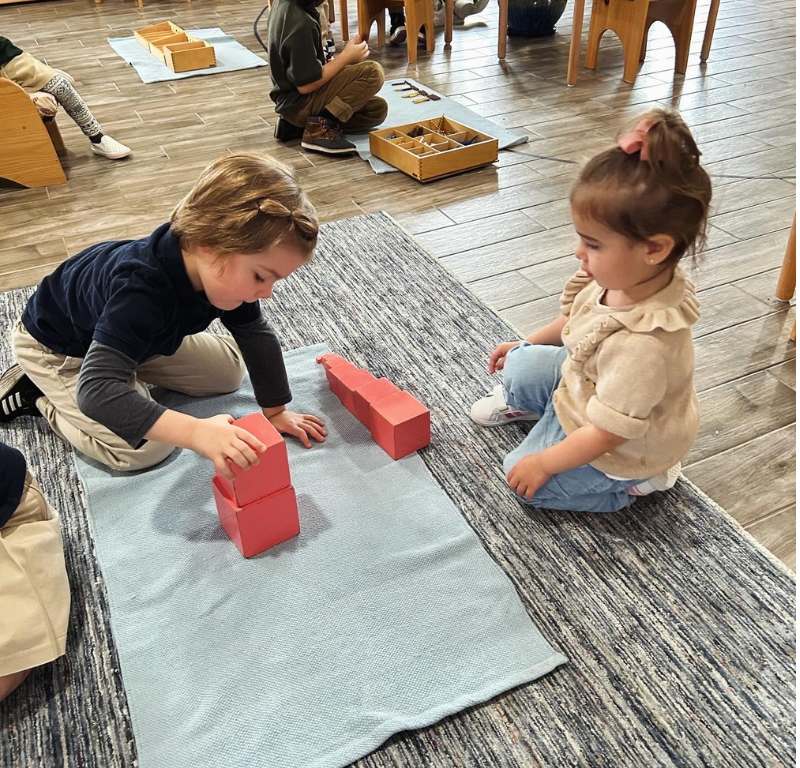
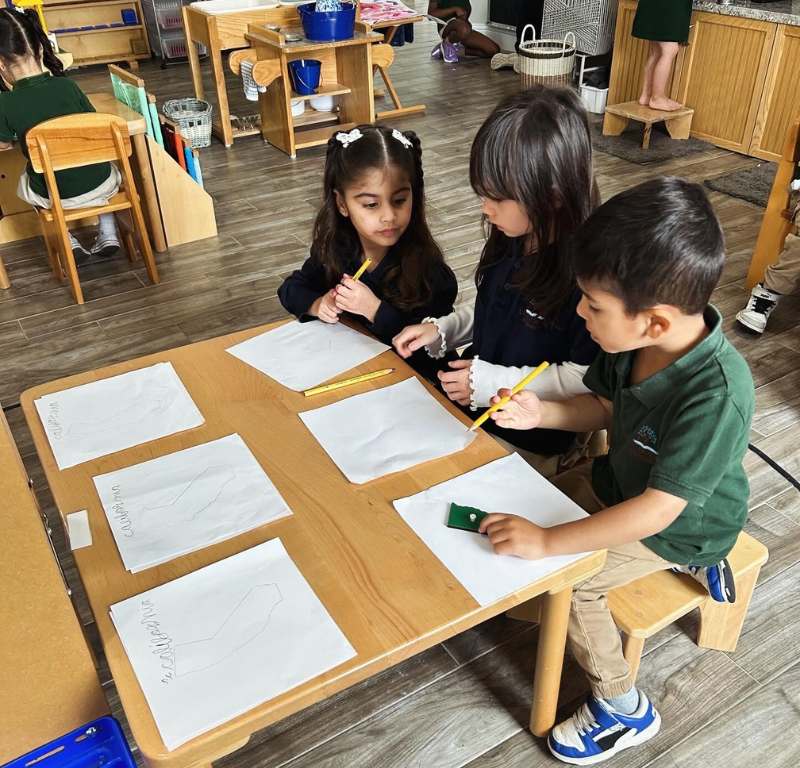
PRACTICAL LIFE SKILLS
Children in Montessori classrooms learn to take care of themselves and their environment through activities such as hand washing, dusting, mopping, folding, pouring, cutting, etc. These activities help toddlers and preschool-age children learn to work independently, develop concentration, and prepare for later work with reading and math.
SENSORIAL DEVELOPMENT
Children work with material that develop and refine the 5 senses—seeing, hearing, touching, tasting, and smelling—and build a foundation for speech, writing, and math. Each scientifically designed material isolates a specific quality such as color, size, or shape. This focuses the child’s attention on this one characteristic, and teaches them to sort, classify, order, and develop vocabulary to describe objects she experiences in the world around them.
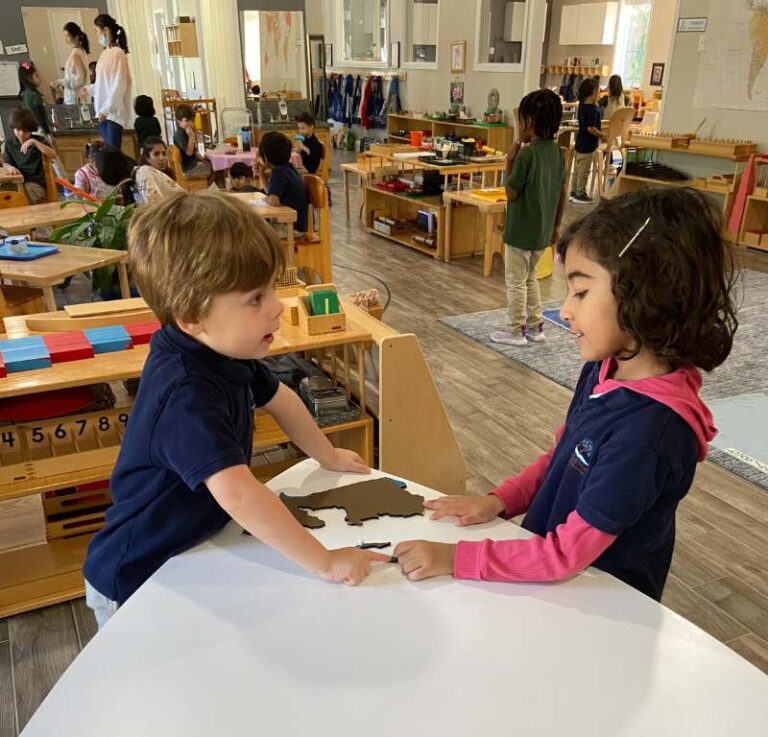
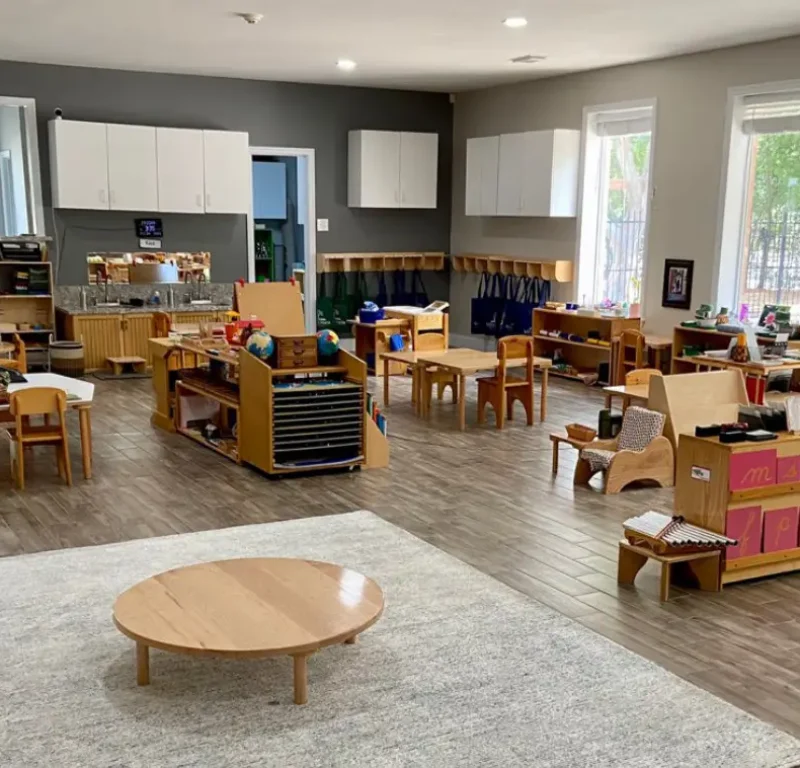
LANGUAGE
When the child leaves the Montessori classroom after the age of six, he will have become an articulate person, being able to communicate his feelings in well-formed sentences and in writing. He will be able to write these thoughts and feelings in a skillful handwriting. He will have the ability to write in different styles and about a variety of subjects. The child will have total reading and a sense of the home language at a level where he will be the master of his words.
MATHEMATICS
All babies are born with mathematical minds, that is, they have a propensity to learn things which enhance their ability to be exact and orderly, to observe, compare, and classify. Humans naturally tend to calculate, measure, reason, abstract, imagine and create. If mathematics is not part of the young child’s experience, his subconscious mind will not be accepting of it at a later date. The materials in the math area offer the children the ‘keys’ that they will need to send them on the road to further exploration and maturation of the mathematical mind. The ways in which the materials are ordered allows the children to complete full intellectual cycles that help them to
achieve the freedom to become independent.
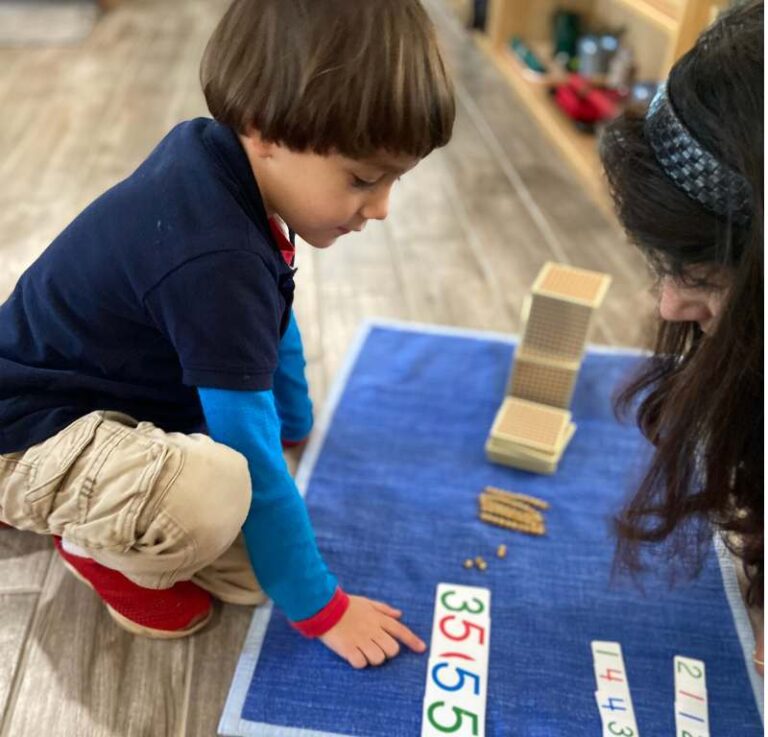

CULTURAL STUDIES
A wide range of subjects, including history, geography, science, art, and music, are integrated in lessons in the cultural area of the curriculum. Children learn about their own community and the world around them. Discovering similarities and differences among people and places helps them develop an understanding and appreciation of the diversity of our world, and a respect for all living things. Even though this subject encompasses the largest amount of material, it is also the hardest to characterize fully because it is interwoven in the very fabric of the classroom. Montessori education never shuts any subject into a rigid time slot in the name of organization. Instead, it is common in a Montessori classroom to begin a lesson on an important historical figure, only to add geography by pointing out his country on the globe. Or perhaps, a science project was prepared using food coloring dyes and a natural discussion on color mixing ensued.
Cultural studies in the classroom are viewed first and foremost as an aid to life rather than facts to be memorized. This results in the child’s joyful assimilation of the world they live in, rather than disinterested regurgitation of seemingly useless information.
